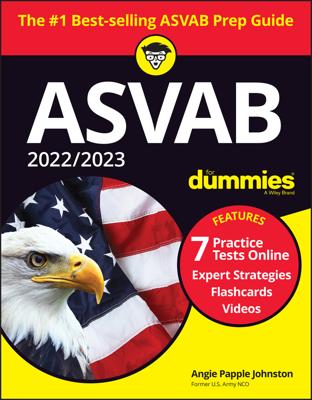The ASVAB Auto & Shop Information subtest will test your knowledge of fasteners. Although wood and metal (and other materials) can be held together with glue, straps, duct tape, and other brilliant fastening methods, people usually fasten these types of materials with nails, screws, bolts, and rivets. These fasteners offer more strength and stability than the white glue that you used to fasten painted macaroni noodles onto construction paper in the first grade.
Nails
Nails are used to hold pieces of wood together. The nail head is flat, and the shank is usually round. Nail length is designated by the penny system, which is abbreviated with a d. A ten-penny nail is a 10d nail. Length and thickness generally correspond. Nails that are larger than 20-penny are called spikes and are measured in inches.
The penny system is used in the United States. Penny size indicates the nail’s length. The higher the penny size, the longer the nail. The penny system is derived from the price of 100 nails in the 15th century in England.
Other types of nails include the following:
Brads and finishing nails: They have heads that are made to fit flush with or slightly below the surface of the wood.
Common nails: These nails are the most commonly used nails. (How about that for a truly difficult vocab word?)
Double-headed nails: These have two heads, one lower than the other, and a point on the other end. The nail is driven to the lower head but can be pulled out of the material because of the remaining higher head. These nails are used for temporary construction that will be taken apart.
Screws and bolts
Unlike nails, you can easily take screws and bolts out of the wood without causing additional damage to the wood (unless, of course, the threads are stripped). These fasteners also hold more tightly than nails. Screws have flat heads, round heads, or oval heads; and in addition to this classification, they also have standard heads (for standard slotted screwdrivers) or Phillips heads (with cross-shape slots). Screw sizes are based on length and the diameter of the unthreaded part of the screw.
Here’s the lowdown on these types of fasteners:
Wood screws: Wood screws are used to fasten wood. (Hmm, ingenious!)
Lag screws: Lag screws have square- or hexagon-shaped heads.
Bolts: Bolts don’t thread into wood. They have flat ends (as opposed to the pointed ends of screws). They’re held in place by a nut (which is what actually screws into the threads) and washer. The body of the bolt may have few threads or many.
Machine screws: Machine screws are used to fasten metal parts. Machine screws are sometimes used with nuts. They come in various lengths and widths and have a wide variety of heads.
Nuts and washers
Nuts can be square or hexagonal. Cap nuts are rounded and smooth; stop nuts prevent the screw or bolt from coming loose. Wing nuts have flanges on each side so they can be tightened by hand.
Washers prevent damage to the surface of material by preventing the bolt head from digging into the material. They also help keep the bolt (or screw) in place. Flat washers, a simple ring of flat metal, are the most common type of washer. Shake-proof washers have teeth to prevent them from skipping, while split-lock washers have two ends that dig into the nut and the material to keep the screw from slipping out.
Rivets
Rivets are commonly used to fasten metal parts together, especially when a weld is insufficient. Standard rivets are driven using a bucking bar. Rivets come in a wide variety of lengths, diameters, and head shapes. The rivet material should match the material being fastened. Pop rivets can be driven when only one side of a joint is accessible.

